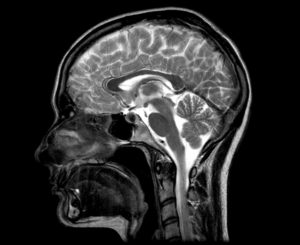Using inorganic nitrites as a marker for brain injuries caused by a stroke

Following an acute brain injury like subarachnoid haemorrhage (a type of stroke), the brain continues to undergo secondary damage due to processes initiated by the primary injury (“early brain injury”).
The main clinical priority following hospital admission is therefore to prevent the development of further brain damage. However, the extent and evolution of this secondary brain damage cannot easily be determined from currently available investigations.
Methods to quantify early brain injury in patients either depend on invasive monitoring (with the risk of further brain damage) or the subjective and qualitative assessment of radiological images. Furthermore, standard bedside monitoring techniques require long recording periods to give useful clinical information. This results in difficulty guiding treatment and predicting neurological outcomes.
Clinical scientists at the University of Oxford have developed a method to measure the response of injured brain tissue to nitrites using bedside cerebral monitoring as a biomarker of neurological injury. The present invention takes a dynamic approach and tests the acute physiological response of injured brain tissue to a molecular probe. Such an approach allows diagnostically important and personalised information to be obtained in much shorter time scales, e.g. in the order of hours and minutes rather than days.
In particular, these biomarkers can give clinicians a valuable insight into which patients are most likely to develop further brain damage and, therefore, who would benefit from early intervention.
about this technology

